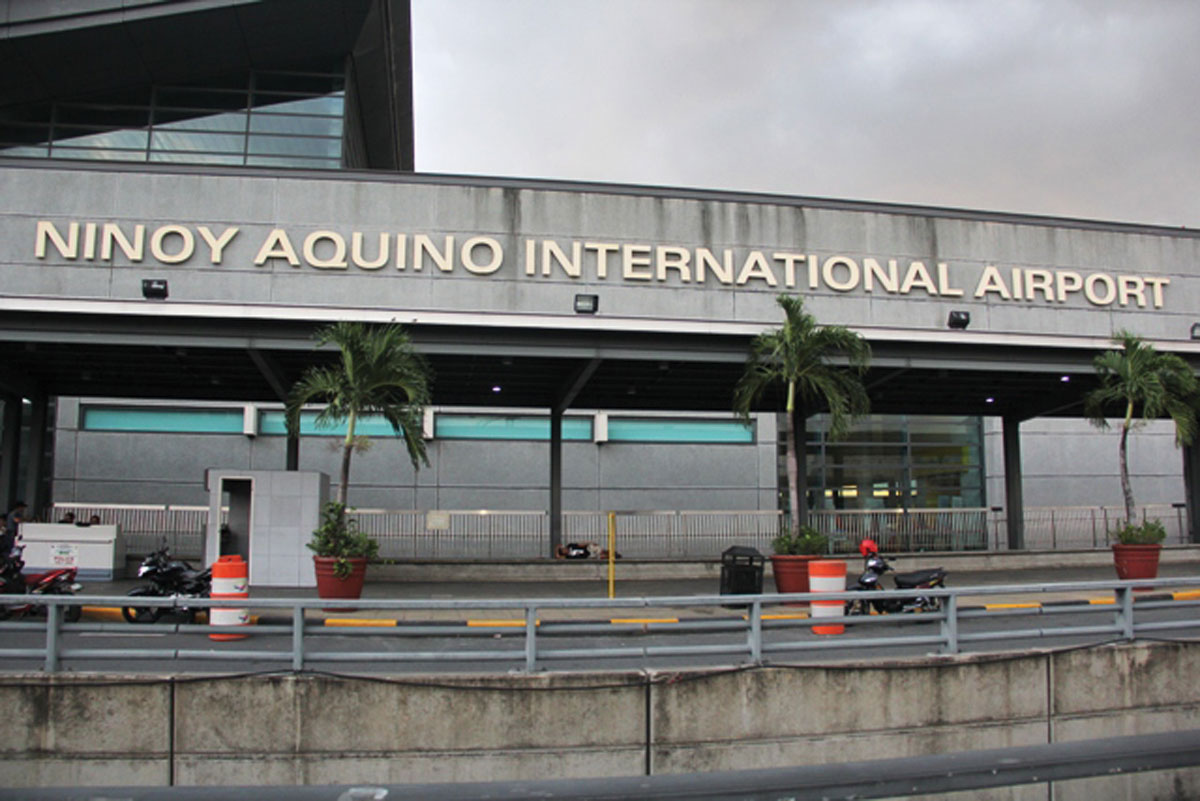
New measures don’t apply to US arrivals
THE Philippines has updated its roster of “red, yellow, and green” countries and jurisdictions following its decision to ease the quarantine protocols for arriving travelers, according to Malacañang.
Presidential Spokesperson Harry Roque on Friday, October 15, said that the Inter-Agency Task Force for the Management of Emerging Infectious Diseases (IATF-EID) came up with the list, which will take effect from Oct. 16 to 31.
Romania is the only country that has been included in the red list, or those classified as “high risk” based on their COVID-19 diseases incidence rate
On the other hand, there are 49 states and jurisdictions in the green list, or those classified as “low risk” for COVID-19 infections: Algeria, American Samoa, Bhutan, Burkina Faso, Cameroon, Cayman Islands, Chad, China (Mainland), Comoros, Republic of the Congo, Cook Islands, Eritrea, Falkland Islands (Malvinas), Gibraltar, Hong Kong (Special Administrative Region of China), Kiribati, Madagascar, Mali, Marshall Islands, Federated States of Micronesia, and Montserrat.
Also included in the green list are Nauru, New Zealand, Nicaragua, Niger, Niue, North Korea, Northern Mariana Islands, Palau, Poland, Saba (Special Municipality of the Kingdom of the Netherlands), Saint Helena, Saint Pierre and Miquelon, Samoa, Sierra Leone, Sint Eustatius, Solomon Islands, Sudan, Syria, Taiwan, Tajikistan, Tanzania, Tokelau, Tonga, Turkmenistan, Tuvalu, Uzbekistan, Vanuatu, and Yemen.
Meanwhile, all other countries, jurisdictions, or territories not mentioned are included in the yellow list, or those classified as “moderate risk” for COVID-19. The United States is under the yellow list.
Testing, quarantine protocols
Roque also said that the IATF-EID has “streamlined and codified” the testing and quarantine protocols for international travelers entering the Philippines.
Arriving travelers coming from or who have been to red countries within the last 14 days prior to their arrival in the Philippines will be barred from entering.
However, travelers who are merely transiting through the red country should not be deemed as “having come from or having been to said country or jurisdiction or territory if they stayed in the airport the whole time and were not cleared for entry by its immigration authorities,” said Roque.
Filipinos returning to the country through government-initiated or non-government-initiated repatriation, as well as Bayanihan Flights, will also be allowed subject to testing and quarantine protocols.
Passengers from the red countries who are allowed to enter the Philippines are required to undergo a 14-day quarantine upon arrival. The first 10 days shall be observed in a quarantine facility, while the last four days will be completed at home.
They are also mandated to take a reverse transcription-polymerase chain reaction (RT-PCR) test on their seventh day in the country.
“Notwithstanding a negative test result, the arriving passenger shall complete the facility-based quarantine period of 10 days,” Roque said.
The Bureau of Quarantine (BOQ) has been directed to ensure strict symptom monitoring while in the facility quarantine for 10 days.
For fully-vaccinated travelers from yellow countries, they are required to undergo a facility-based quarantine until the release of their negative RT-PCR test result taken on their fifth day in the Philippines.
“After which, they shall be required to undergo home quarantine until their 10th day,” added Roque.
Foreign nationals are also required to secure their pre-booked accommodation of at least six days.
For unvaccinated, partially vaccinated, or individuals whose vaccination status cannot be independently verified, they need to undergo a facility-based quarantine until the release of a negative RT-PCR test taken on the seventh day.
After which, they are required to undergo home quarantine for another week. Foreign nationals must also secure their pre-booked accommodation of at least eight days.
Meanwhile, fully vaccinated foreign nationals coming from the green list territories are no longer required to undergo a facility-based quarantine. Instead, they need to yield negative RT-PCR test results taken within 72 hours prior to departure from the country of origin.
“Upon arrival, no facility-based quarantine will be further required but the passenger is enjoined to self-monitor for any symptoms until the 14th day,” Roque said.
Fully-vaccinated Filipinos, on the other hand, can choose facility-based quarantine until the release of a negative RT-PCR test taken in the quarantine facility upon arrival, or no facility-based quarantine after getting a negative RT-PCR test within 72 hours prior to departure from the country of origin. They are likewise enjoined to self-monitor for any symptoms until the 14th day.
As for unvaccinated, partially vaccinated, or individuals whose vaccination status cannot be independently verified, and those vaccinated but failed to comply with the test-before-travel requirements, they are required to undergo a facility-based quarantine until the release of a negative RT-PCR test taken on the fifth day.
“In the case of foreign nationals, they shall be required to secure hotel reservations for at least six days,” said Roque.
Unvaccinated or partially vaccinated minors traveling with their fully vaccinated parents or guardians, on the other hand, are required to observe quarantine protocols corresponding to their vaccination status.
A parent/guardian will need to accompany the child in the quarantine facility for the full term of the latter’s facility-based quarantine period.
To validate their vaccination status, international Filipino travelers, their spouse, parent/s, and/or children; and foreigners vaccinated in the Philippines can present either VaxCertPH digital vaccination certificate, International Certificate of Vaccination or Prophylaxis (ICV) issued by BOQ or the World Health Organization (WHO), or the national digital certificate of the foreign government accepting VaxCertPH to validate their vaccination status.
Foreigners vaccinated abroad, on the other hand, can present WHO-issued ICV, or the national digital certificate of the foreign government which has accepted VaxCertPH under a reciprocal agreement unless otherwise permitted by the IATF-EID. n







